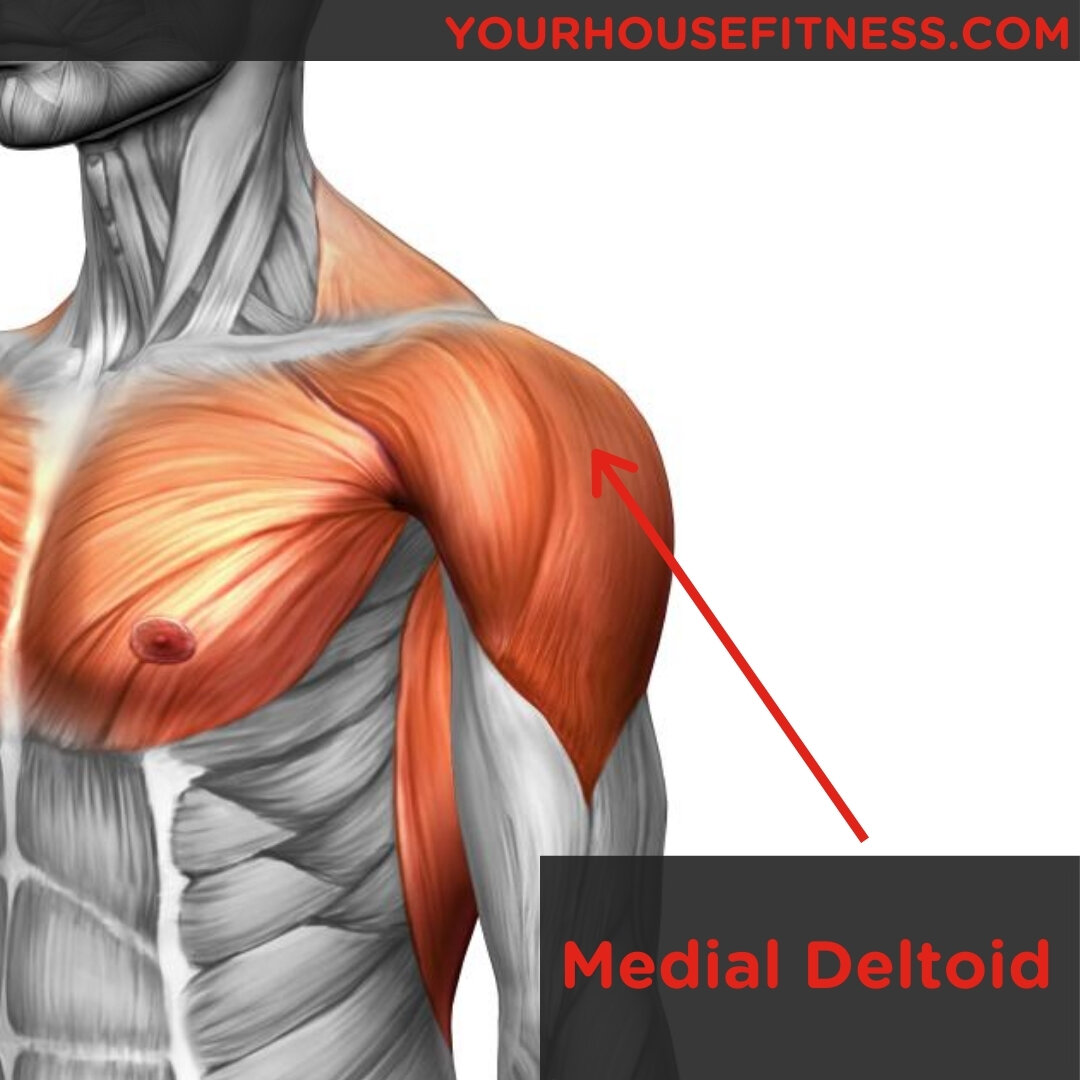Muscle Breakdown: Medial Deltoid
Table of Contents
What Is the Medial Deltoid
The Medial Deltoid is surrounded by the Anterior Deltoid and Posterior Deltoid. It is the section of Deltoid that is most prominent on the shoulder and gives the shoulder its rounded appearance. While training each section of the deltoid is important for overall strength, the Medial Deltoid is what you should target if you are looking for increased muscular appearance and tone!
Medial Deltoid Muscle & Cadaver
Medial Deltoid Function
The main function of the Medial Deltoid is to abduct the arm. This is why the Lateral Raise is a great exercise to target the Medial Deltoid.
Medial Deltoid Origin And Insertion
Medial Deltoid Origin
The origin of the Medial Deltoid is the Acromion Process and the Superior Surface of the Humerus.
Medial Deltoid Insertion
The insertion of the Medial Deltoid is the Deltoid Tuberosity on the Humerus.
Medial Deltoid Innervation
The Medial Deltoid is innervated by the Axillary Nerve.
Medial Deltoid Pain
Pain in the Medial Deltoid can be the result of a muscle strain, tear or from overuse. Symptoms of Medial Deltoid Pain include,
Muscle tenderness
Pain
Decreased range of motion
Swelling
A ‘hot’ muscle
Increased symptoms with movement
In general, pain in the Medial Deltoid, regardless if it is a muscle strain or tear will heal on its own with the proper rest, ice, heat and possible use of anti-inflammatories or pain medication.
Medial Deltoid Pain Bump
Medial Deltoid Pain Bump is a description of symptoms that can occur when the Shoulder Blade is separated from the Clavicle. This can be the result of experiencing a fall where you have landed on the shoulder. If you notice a bump on the body that is hard, will not move and grows with time you should see your doctor immediately to receive a diagnosis. Bumps that are soft, moveable and get smaller with time are generally less concerning.
Medial Deltoid Ligament
The Medial Deltoid Ligament refers to a ligament in the foot, not the shoulder! The Medial Deltoid Ligament is located on the inside of the foot and contains deep and superficial sections.
Medial Deltoid Injury
Injury to the Medial Deltoid can occur from overuse or an acute injury. For example, repetitive overhead work or sports can cause wear and tear in the Medial Deltoid resulting in an overuse injury, or a sudden fall or lifting too heavy of a weight can cause an acute injury. Regardless of the mechanism of injury, most Medial Deltoid injuries will heal on their own with the proper recovery plan. To avoid injury to the Medial Deltoid, there are some simple precautions that you can take. Some of these steps will also result in better sports performance. Some preventative actions for the Medial Deltoid include,
Completing a proper warm-up before sport or physical activity
Stretching before and after exercise
Taking rest days for muscle recovery
Strengthening a weak Medial Deltoid
Medial Deltoid Exercise
Behind the Back Lateral Raise
Lateral Raise
The Lateral Raise can be performed unilaterally or bilaterally. Hold a dumbbell in each hand and raise the hand up to shoulder height. Slowly lower the dumbbell back to the starting position and repeat the movement for 3 sets of 12-15 reps.
W Raise
The W Raise is performed on an incline bench with dumbbells. Press your torso against the inclined bench so it is supporting your weight. Your feet should be in a wide stance behind you with little to no bend in the knee. Have a slight bend in the elbow and bring your arms up to form a W, you should stop raising the dumbbells when they are parallel with the ground. Repeat this movement for 3 sets of 12-15 reps.
Behind the Back Lateral Raise
The Behind the Back Lateral Raise uses a cable machine. Performing the Lateral Raise behind the back helps to ensure the activation of the Medial Deltoid. Set the pulley of the cable machine to the lowest setting and keep the cable behind you. Perform a Lateral Raise as usual for 3 sets of 12-15 reps.
Medial Deltoid Raises
Medial Deltoid Raises are more commonly known as Lateral Raises. We described the Lateral Raise earlier in the article, but basically it is when you begin with your arms at your sides and raise the hands up to shoulder height to create the letter ‘T’ with your body. Many people struggle with Medial Deltoid Raises because it is a section of the Deltoid that is often forgotten about. With time and practice, you can increase strength in the Medial Deltoid.
Medial Deltoid Stretch
Stretch 1
Bring the left arm across the chest and bend at the elbow so the left hand is behind the head. Use your right hand to press the left elbow towards you to increase the intensity of the stretch. Hold this position for 30 seconds and then repeat on the other side.
Stretch 2
Place your left hand behind your back as if you are putting it into your back right pocket. This will stretch the Medial Deltoid. If you are looking for a greater stretch, hold a towel in both hands and use the right hand to pull the towel away from the body. Hold this position for 30 seconds and then switch sides.
Medial Deltoid Workout
Using the exercises we have listed above, you can create a Medial Deltoid Workout. Keep in mind that there are also many other exercises for the chest and the shoulder that will engage the Medial Deltoid. If you are just starting to train the Medial Deltoid, start with a light load as you will quickly discover that the muscle may be weak. Begin with 3 sets of 10-12 reps and increase the load as the exercise becomes easier. A general rule of thumb is to have two reps in reserve. If you can complete the exercise with more than two reps in reserve, increase the load.



